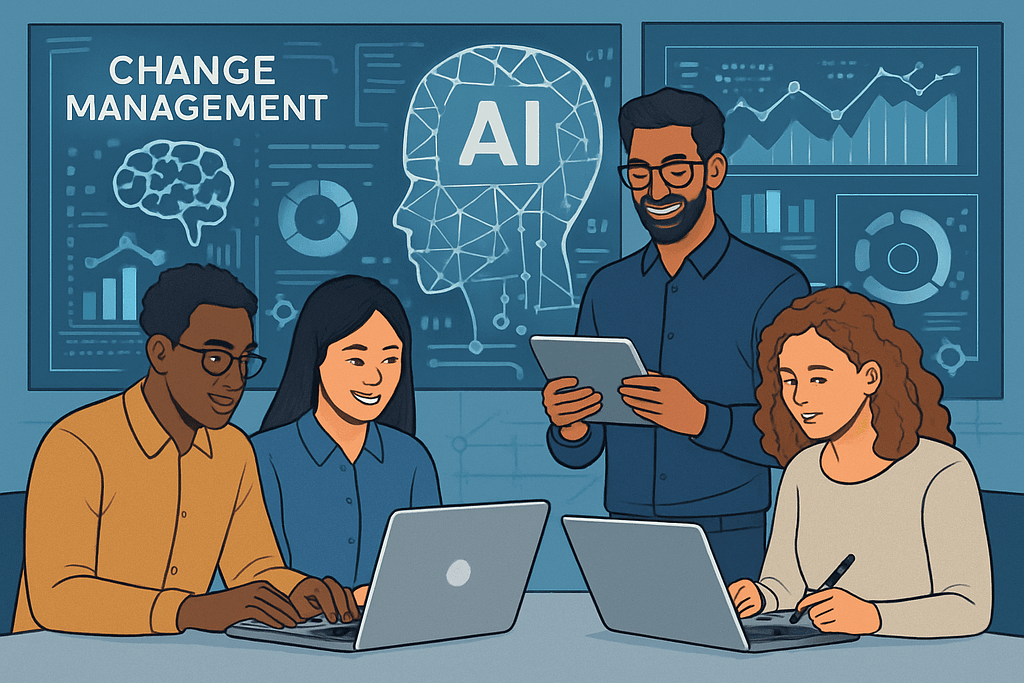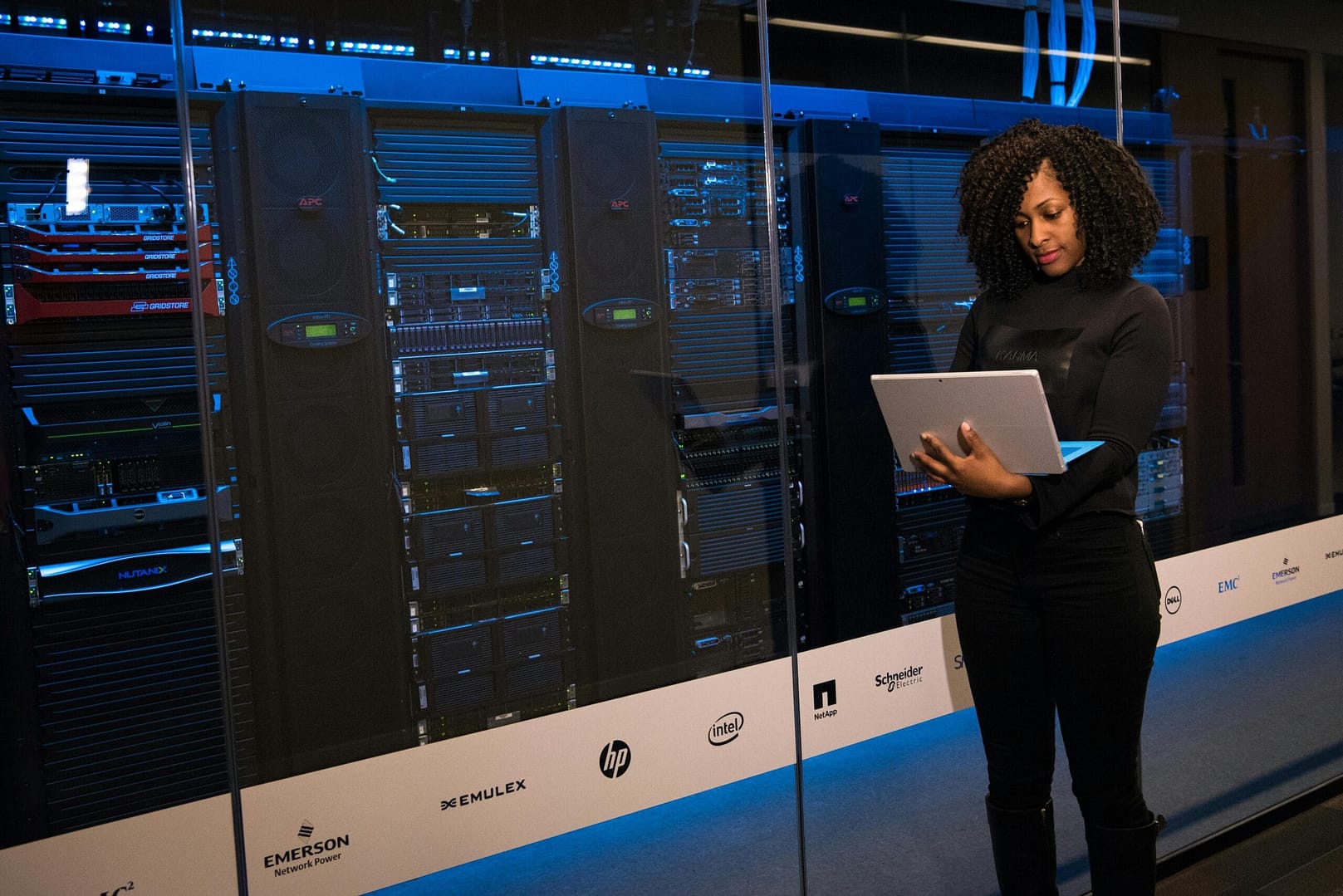Adapting Change Management for Success in a Remote, AI-Driven Era!

Table of Contents
We live in an age of unprecedented technological disruption. The way we work, collaborate, and even think about work itself is undergoing a rapid transformation. In this whirlwind of change, one thing remains constant: the need for effective change management.
But what was once a relatively straightforward process of implementing new systems or restructuring teams has now become a complex, multifaceted discipline that must adapt to the realities of remote work and the pervasive influence of AI. This isn’t just a tweak; it’s a fundamental change management evolution.
For decades, change management has been a critical tool for organizations seeking to navigate transitions. Now, more than ever, organizations must prioritize change management to remain competitive and relevant. But what worked yesterday won’t necessarily work tomorrow.
This blog post will explore the profound ways in which change management has evolved to meet the challenges and opportunities of a remote-first, AI-driven world, offering practical guidance and insights for navigating this new landscape. For more ongoing advice and tips about change management strategies, visit our Blogs section.
The Shift to Remote-First: A Catalyst for Change Management Evolution
2.1. Remote Work as the New Normal
Remote work, once a perk, has become a staple for many organizations. The COVID-19 pandemic accelerated this trend, forcing companies to embrace distributed workforces. Even now, years later, many organizations continue to operate with hybrid or fully remote structures. This has radically altered the organizational landscape, with traditional hierarchical structures giving way to more fluid, decentralized teams. For remote workers and change management professionals looking for practical tools to navigate compensation discussions in this new landscape, our Real-Time Salary Calculator provides valuable insights.
However, this shift isn’t without its challenges. Remote work can lead to communication silos, feelings of isolation among employees, and difficulties in maintaining a strong company culture. Maintaining open communication channels and team cohesion in a remote environment requires deliberate and thoughtful strategies.
2.2. Challenges to Traditional Change Management in Remote Environments
Traditional change management strategies, often relying on in-person workshops, town hall meetings, and classroom-style training, are simply less effective in a remote setting. Gauging employee sentiment becomes more difficult when you can’t read body language or have informal water cooler conversations. Resistance to change can fester in isolation, making it harder to address concerns proactively.
The reliance on digital communication highlights issues such as meeting fatigue and the potential for miscommunication due to the lack of non-verbal cues. Ensuring that messaging is clear, consistent, and empathetic is critical.
2.3. Remote-First Change Management: New Best Practices
Change management remote work demands a fresh approach. Leveraging digital communication tools like Slack, Microsoft Teams, and Zoom is paramount. These platforms should be used not only for announcements but also for ongoing dialogue, feedback sessions, and virtual team-building activities.
Building a strong online community is also essential. This can involve creating dedicated channels for specific change initiatives, fostering peer-to-peer support networks, and encouraging regular check-ins.
Combatting isolation requires proactive strategies, such as virtual coffee breaks, online games, and team-based projects. These efforts create a sense of connection and belonging, which is vital for navigating change successfully.
The AI Revolution: Transforming the Practice of Change Management
3.1. Understanding the Impact of AI on Work
Artificial intelligence is rapidly reshaping the world of work. AI-driven automation is transforming job roles, requiring employees to adapt to new skill sets and responsibilities. This can lead to anxiety and resistance as employees grapple with the potential impact on their jobs. It’s crucial to address common fears and misconceptions about AI, emphasizing its potential to augment human capabilities rather than replace them entirely. For comprehensive AI-driven tools and support in change management, explore our AI Resources.
3.2. How AI is Changing Change Management
Change management AI is no longer a futuristic concept; it’s a present-day reality. AI is transforming change management in several key ways:
AI-Powered Insights and Data Analytics: AI algorithms can analyze vast amounts of data to gauge employee sentiment, predict resistance to change, and identify key influencers within the organization. These insights provide change leaders with a deeper understanding of the organizational dynamics, allowing them to tailor their strategies more effectively. See https://primeast.com/us/insights/ai-change-management-how-artificial-intelligence-is-revolutionizing-the-field/
Personalized Learning and Development: AI-driven training platforms can provide personalized learning experiences, adapting to individual skill gaps and learning styles. These platforms offer adaptive learning paths that adjust based on performance and feedback, ensuring that employees receive the precise training they need to succeed in their evolving roles.
Automated Communication and Support: Chatbots and virtual assistants can provide instant answers to employee questions about change initiatives. These tools can also automate task assignments and progress tracking, freeing up change managers to focus on more strategic activities.
3.3. Adapting Change Management to AI Implementation
Successfully integrating AI into the workplace requires a thoughtful and well-executed change management strategy. It’s essential to communicate the benefits of AI clearly and transparently, addressing employee concerns about job security.
Training programs should be developed to help employees acquire the skills needed to work alongside AI, fostering a sense of empowerment and opportunity. Ethical considerations must be addressed to ensure that AI is implemented responsibly and fairly.
Organizations must be clear that AI is a tool to enhance jobs, not eliminate them. Employees also need to be upskilled to work effectively with AI and understand its use within their workflows.
Agile Change Management in a Dynamic World
4.1. The Need for Agility
The traditional, waterfall-style approach to change management is no longer effective in today’s fast-paced environment. Organizations need to embrace agile change management remote principles to keep pace with constant innovation and disruption. Agile methodologies emphasize iterative development, frequent feedback loops, and continuous improvement.
4.2. Agile Change Management Principles for Remote Teams
Adapting agile principles to change management, particularly for remote teams, requires a focus on iterative change implementation with frequent feedback loops. This allows for continuous refinement based on real-time data and employee input. Empowering cross-functional teams to drive change initiatives fosters a sense of ownership and accountability. Prioritizing communication, collaboration, and transparency is crucial for maintaining alignment and trust within distributed teams.
4.3. Practical Agile Change Management Techniques
Practical agile change management techniques include using Kanban boards and sprint planning for change initiatives. These tools provide a visual representation of the change process, allowing teams to track progress and identify bottlenecks. Implementing retrospectives allows teams to learn from past experiences and improve future efforts. This iterative approach ensures that change management efforts are constantly evolving to meet the changing needs of the organization.
Digital Transformation and Change Management: A Symbiotic Relationship

5.1. The Core of Digital Transformation
Digital transformation is more than just implementing new technology; it’s about fundamentally changing the way an organization operates. It encompasses technology, processes, and culture, requiring a holistic approach to change.
5.2. Why Change Management is Crucial for Successful Digital Transformation
Digital transformation initiatives often fail due to a lack of effective change management. Without proper planning and execution, new technologies can be met with resistance, leading to low adoption rates and ultimately, failure.
5.3. Change Management Strategies for Digital Transformation
Successful digital transformation requires a clear vision for the future, engaging stakeholders at all levels of the organization, and providing adequate training and support. Change leaders must communicate the benefits of the digital transformation in a compelling way, addressing employee concerns and fostering a sense of excitement about the future.
The Future of Change Management: Trends and Predictions
The future of change management is likely to be shaped by several key trends:
6.1. Increased Focus on Employee Experience
Employee experience will become an increasingly important focus of change management. Prioritizing employee well-being and engagement during change will be essential for minimizing disruption and maximizing adoption. Creating a positive and supportive change experience will foster a sense of trust and commitment.
6.2. Data-Driven Change Management
Data analytics will play an increasingly important role in informing change strategies and measuring impact. Change leaders will leverage data to identify areas of resistance, track progress, and optimize their approaches.
6.3. Continuous Change Management
Organizations will need to embrace a culture of continuous improvement and adaptation. Change management will no longer be a one-time event but an ongoing process of learning and evolution.
6.4. The Role of the Change Management Professional: Evolving Skills
The skills required of change management professionals will continue to evolve. Emphasis will be placed on data analysis, AI literacy, and remote collaboration proficiency. Change leaders will need to be adept at using technology to drive change, fostering engagement in remote environments, and leveraging data to make informed decisions. To learn more about how roles are transforming due to AI implementation, check out our detailed analysis of 5 New Roles Emerging from AI in Operations in 2025.
Conclusion: Embracing the Evolving Landscape of Change
The evolution of change management is undeniable. As we navigate the complexities of a remote-first, AI-driven world, it’s crucial to adapt our approaches and embrace new strategies. By leveraging technology, fostering collaboration, and prioritizing the employee experience, we can successfully navigate change and unlock the full potential of our organizations. To learn more about my background and expertise in guiding organizations through transformation, visit my About page.
Don’t just react to change; embrace it. Invest in developing your change management capabilities and empower your organization to thrive in this dynamic new world. If you have any questions, feel free to Get In Touch! or subscribe to my newsletter for more insights.